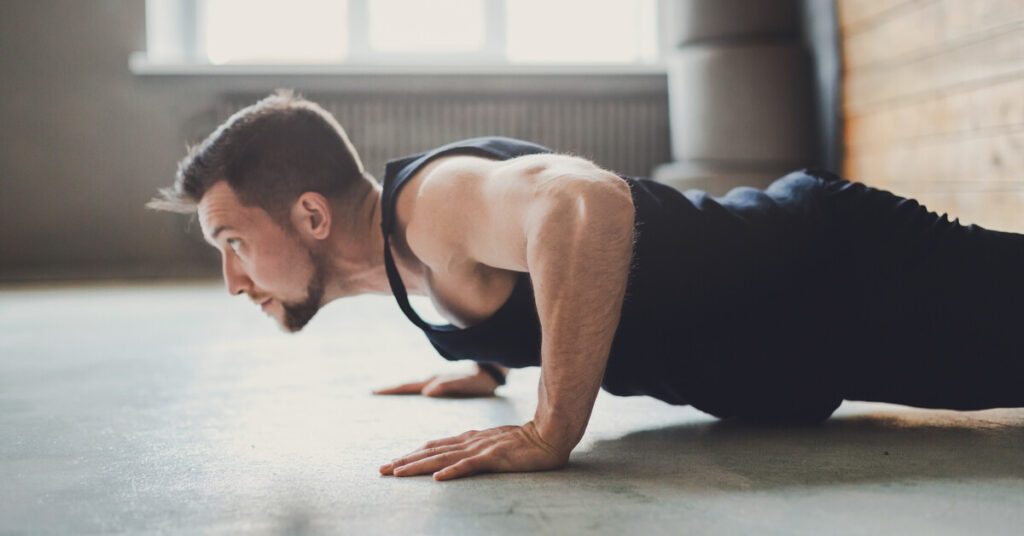How to Do Push-Ups Correctly: A Professional Guide
Push-ups are a foundational exercise in fitness, renowned for building upper body strength and enhancing overall physical conditioning.
Thank you for reading this post, don't forget to subscribe!فيديو شجار لامين يامال مع لاعب مايوركا من هنا

This article serves as a definitive guide on how to do push-ups correctly, emphasizing proper technique, common pitfalls, variations, and the benefits of incorporating push-ups into your fitness routine.
Understanding Push-Ups
What Are Push-Ups?
Push-ups are a bodyweight exercise primarily targeting the chest (pectoralis major), shoulders (deltoids), and triceps (triceps brachii). This compound movement also engages the core and lower body, making it a highly effective total-body workout that requires no special equipment.
Key Muscles Worked
Performing push-ups effectively engages several muscle groups:
- Pectoralis Major: Essential for pushing movements.
- Deltoids: Stabilize the shoulder joint.
- Triceps Brachii: Involved in arm extension.
- Rectus Abdominis: Supports body alignment and stability.
- Obliques: Assist in core stabilization.
- Quadriceps: Help maintain leg position.

Benefits of Push-Ups
Incorporating push-ups into your routine offers numerous advantages:
- Increased Upper Body Strength: Targets key muscle groups for improved pushing power.
- Core Engagement: Strengthens the abdominal region for better stability.
- Accessibility: Can be performed anywhere, making them versatile.
- Functional Strength: Mimics everyday movements, enhancing overall fitness.
- Joint Stability: Strengthens the shoulder area, improving stability.
- Scalability: Adaptable for all fitness levels, from beginners to advanced athletes.

How to Do Push-Ups Correctly
Mastering the correct technique for push-ups is crucial for maximizing benefits and minimizing injury risk. Follow these steps on how to do push-ups correctly:
Step 1: Start in a Plank Position
- Hand Placement: Begin on all fours with hands slightly wider than shoulder-width apart.
- Foot Position: Extend your legs straight back, balancing on your toes with feet close together.
- Body Alignment: Maintain a straight line from head to heels, engaging your core to avoid sagging hips.
Step 2: Lower Your Body
- Bend Your Elbows: Inhale as you lower your body, keeping elbows at a 45-degree angle to your torso.
- Maintain Alignment: Keep your body straight as you lower; avoid arching your back or letting your hips sag.
Step 3: Press Back Up
- Exhale and Push: Once your chest is just above the ground, exhale and push through your palms to return to the starting position.
- Fully Extend Arms: Ensure your arms are fully extended without locking your elbows at the top.
Step 4: Repeat
- Controlled Movements: Perform push-ups at a controlled pace, aiming for 8-12 repetitions based on your fitness level.
- Rest as Needed: Take breaks if fatigued to maintain proper form.
Common Mistakes to Avoid
To effectively learn how to do push-ups correctly, be aware of these common errors:
1. Incorrect Hand Placement
- Solution: Position hands slightly wider than shoulder-width.
2. Sagging Hips
- Solution: Engage your core to maintain a straight line from head to heels.
3. Incomplete Range of Motion
- Solution: Lower your chest toward the ground and fully extend your arms at the top.

4. Locked Elbows
- Solution: Keep a slight bend in your elbows to prevent joint strain.
5. Speeding Through Reps
- Solution: Focus on controlled, deliberate movements for better results.
Variations of Push-Ups
Once you master the standard push-up, consider trying these effective variations:
1. Knee Push-Ups
- Technique: Rest your knees on the ground while maintaining a plank position for an easier modification.
2. Incline Push-Ups
- Technique: Place your hands on an elevated surface while keeping your body straight to reduce intensity.
3. Decline Push-Ups
- Technique: Elevate your feet on a bench to increase difficulty.
4. Diamond Push-Ups
- Technique: Position your hands close together in a diamond shape to emphasize triceps engagement.
5. Spiderman Push-Ups
- Technique: Bring one knee toward the elbow as you lower into the push-up for added core engagement.
6. Plyometric Push-Ups
- Technique: Push off the ground with enough force to lift your hands off the floor briefly, adding explosive power to the movement.
Incorporating Push-Ups into Your Routine
1. Warm-Up
Always warm up before starting your workout. Include dynamic stretches that activate the upper body and core muscles.
2. Create a Workout Plan
Integrate push-ups into your fitness routine in various ways:
- Strength Training: Include push-ups in your upper body circuits.
- Bodyweight Workouts: Use push-ups to focus on functional strength.
- High-Intensity Interval Training (HIIT): Pair push-ups with other exercises for a complete workout.
3. Monitor Progress
Keep track of your performance by recording the number of push-ups completed. Gradually increase intensity by trying new variations or adding repetitions.
Safety Tips for Push-Ups
- Listen to Your Body: Stop if you experience pain or discomfort, and adjust your form as needed.
- Use a Mat: A soft surface can provide comfort and reduce wrist strain.
- Stay Hydrated: Drink water before and after your workout to support performance.
Conclusion
Mastering the technique of push-ups is essential for any fitness enthusiast. Understanding how to do push-ups correctly not only enhances strength and stability but also lays a strong foundation for your overall fitness journey. By focusing on proper form, avoiding common mistakes, and exploring various push-up modifications, you can effectively integrate push-ups into your workouts and achieve your fitness goals. Embrace the challenge, and enjoy the extensive benefits this classic exercise brings to your physical and mental well-being.




